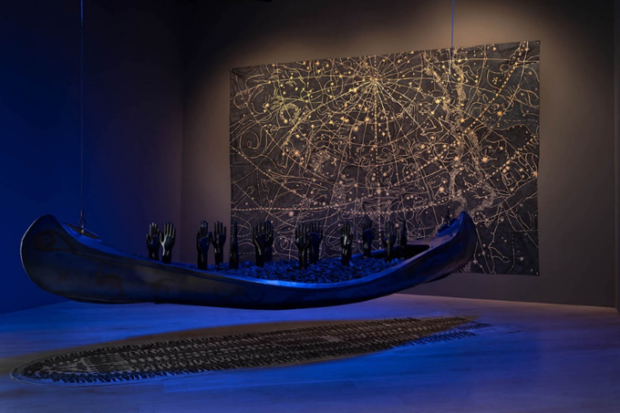
The hutongs of Beijing have long been sites of informal gatherings, neighborly consideration, and thrifty consumption. With the urbanization of the city, however, acres of old neighborhoods once animated by these cramped streets have been demolished, uprooting communities and collapsing the silently constructed social ecosystems therein. Alongside the tendency toward individualization inherent in modernity, the destruction of family homes and the physical erasure of the past have led to an overwhelming sense of estrangement among the former residents of these well-worn streets. To preserve the memories of the hutongs and to celebrate the simple wisdom that sustained them, Song Dong filled the enormous space of the Ullens Center for Contemporary Art (UCCA) in Beijing with the bric-a-brac and portions of dilapidated wooden residences that he salvaged from his mother’s home and from other decaying sites of an endangered society.

The exhibition, which took place this past summer, was the culmination of a project that had been gestating for six years. Wisdom of the Poor was as much an exhibition as it was a journey into the past. The centerpiece of the show was a small wooden house with an attic for doves; corridors were lined with useless but still un-discarded objects, like a rusted bicycle, a line of pickle jars, and mounds of tiles and wood. Much of this “stuff” was amassed by Song Dong’s mother, who collected–or rather refused to part with–everyday possessions such as legless dolls, blocks of used soap, bottles, pans, plates, basins, oil flasks, and blankets. Her instinct to stockpile these things was deeply rooted in her experience of a culture of paucity that depended on the conservation and reuse of limited resources.


The project grew and Song was invited by Bice Curiger, art curator of the 2011 Venice Biennale, to exhibit his work as a Para-Pavilion at Arsenale. To create his display, Song used the one-hundred-year-old structure of his former house, in which he had lived for seven years, and one hundred large wardrobes collected from different families. Instead of focusing on the poverty of hutongs, a characteristic painfully obvious to anyone who encounters them today, Song portrayed an enduring but fading system of reciprocity, ingenuity and community based on the “wisdom of the poor.” In the fast paced, highly alienating steely city that Beijing has become, Song Dong expresses a nostalgia for the natural scenery, sense of warmth and community, and folk wisdom of Beijing’s familiar and disappearing hutongs.



Many thanks to Julie Emerson for bringing this project to my attention.
This is the fourth in a series of posts surrounding Professor Jonathan Hay’s Fall 2011 Green Beijing colloquium at the Institute of Fine Arts at NYU. The Green Beijing Series is organized by MA candidate Elizabeth Lee.








Be First to Comment